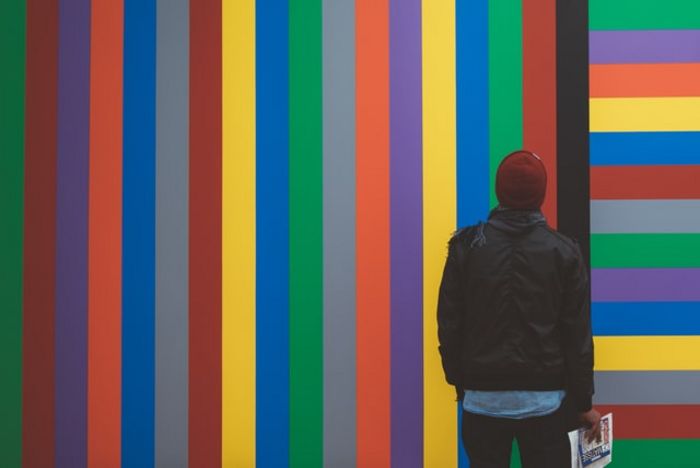The flair in the streets, magnificent buildings and cultural treasures in exhibitions and museums - all this makes Europe's metropolises attractive for tourists. What visitors to Amsterdam, Paris or Lisbon usually do not find out is, how the cities came to be so rich. The truth is, much of this Baroque splendour only exists because of exploitation in the colonies. The European prosperity is based on the robbery of resources such as gold, silver, precious stones, ivory, rubber, salt, and – not last - on one thing: worldwide plantation slavery and slave trade. Even though fragmented Germany was not a colonial power at this time, German shipowners, captains and seamen were involved in human trafficking, often hidden under the Portuguese or Dutch flag. The Brandenburg-African Company initiated by the Elector of Brandenburg itself deported some 20,000 enslaved West Africans across the Atlantic to the Caribbean under the most inhumane conditions. Today, visitors guided through Berlin-Mitte learn nothing about these crimes. To make these hidden stories of the colonised and enslaved and their resistance visible, tourism providers must convey this knowledge.
Postcolonial engagement in museums
Museums are particularly responsible to address their colonial legacy. They are true tourist magnets – thanks to artefacts, which were often brought from Western European colonies. However, the fact that many of those items were acquired illegally or in an unethical manner often remains invisible. At last, the long overdue restitution of these artefacts is getting off the ground. The pressure from formerly colonised states, activists and academics finally sees first results as more and more museums are facing their postcolonial legacy. For example, the Africa Museum in Belgium has been critically addressing King Leopold's brutal occupation of the Congo since 2018. A turnaround for the museum, which had previously romanticised colonisation for bringing prosperity to “the savages". Today, the National Museum of the Netherlands, the Rijksmuseum, also tells its history apart from the glory and wealth of the colonial era. Between the 17th and 19th century, Dutch traders enslaved and sold more than 600,000 Africans and over a million people from Asian areas to North and South America. In order to make this part of Dutch history visible, the museum now includes its gruesome past in its exhibitions. The museum displays now do not only give information on who acquired certain pieces of art, but also why wealthy merchants got the means to purchase them: through slave trade, exploitation and robbery.
Post-colonial guided tours
Not only museums but also the streets of European metropolises are full of colonialism. Some guides therefore offer postcolonial tours to follow these paths. Black Heritage Tours in Amsterdam, Brussels and New York show tourists colonial symbols on canal houses, national monuments and in museums. The tours take place in close cooperation with tourism marketing. The NGO Berlin Postkolonial e.V. also explores forgotten or glossed-over places of German colonial history in Berlin's Mitte district. "We want to tell people about a repressed part of history and pay tribute to those who resisted colonialism and racism. Their traces can literally be found on our doorstep, but are usually ignored by ordinary guided tours," says Christian Kopp from Berlin Postkolonial. The association's oldest tour guides through the so-called African Quarter in Berlin's Wedding district, one of the largest colonial propagandist street ensembles glorifying the German colonial empire. Another tour shows the beginnings of the Black Diaspora in the old Friedrichstadt as well as the former palace of Reich Chancellor Otto von Bismarck at Wilhelmstraße 92. This is where the great powers negotiated the partition of Africa in 1884/85 and awarded the Congo to Leopold II of Belgium – resulting in millions of deaths. What was originally conceived as an educational concept increasingly appeals to tourists who want to learn about the imperialist urban geography of their destination. Nevertheless, Christian Kopp does not want to commercialize the tours for tourism purposes: "We tell about inconceivable crimes for which there is still no recognition, apology or compensation today. We have no interest in marketing these topics. We find it disrespectful and impious towards the victims." Therefore, Berlin Postkolonial has no cooperation with Berlin Tourism Marketing. However, there have already been tours for city guides who want to educate themselves on postcolonial issues. Kopp welcomes this initiative: "It is good if guides sensitise themselves to the topic and thus include a postcolonial perspective in their standard programme. However, it would be even better if Black people and People of Colour could speak for themselves as city guides. The guides at Berlin Postkolonial are therefore usually descendants of colonised people."
Knowledge transfer instead of baroque whitewashing
The crimes of the colonial epoch still have impacts today. Figures and symbols that adorn the façades to this day, but also many street names evoke memories of that time. For many Black people, Berlin's M*street, for example, is still a condescending and painful reminder of the minors of African origin who were forced to serve in the palaces of the royal Hohenzollern family around 1700. In order to draw a realistic picture that does justice to these traumas, it is important to critically examine the colonial history behind exhibitions and tourist attractions: the classic sights, but also new places that are linked to colonialism, racism and resistance. In this way, tourism providers can live up to their responsibility and impart knowledge about the past and present shaped by colonialism, instead of merely dreaming back with their guests to the past of European metropolises, which is not only magnificent.


